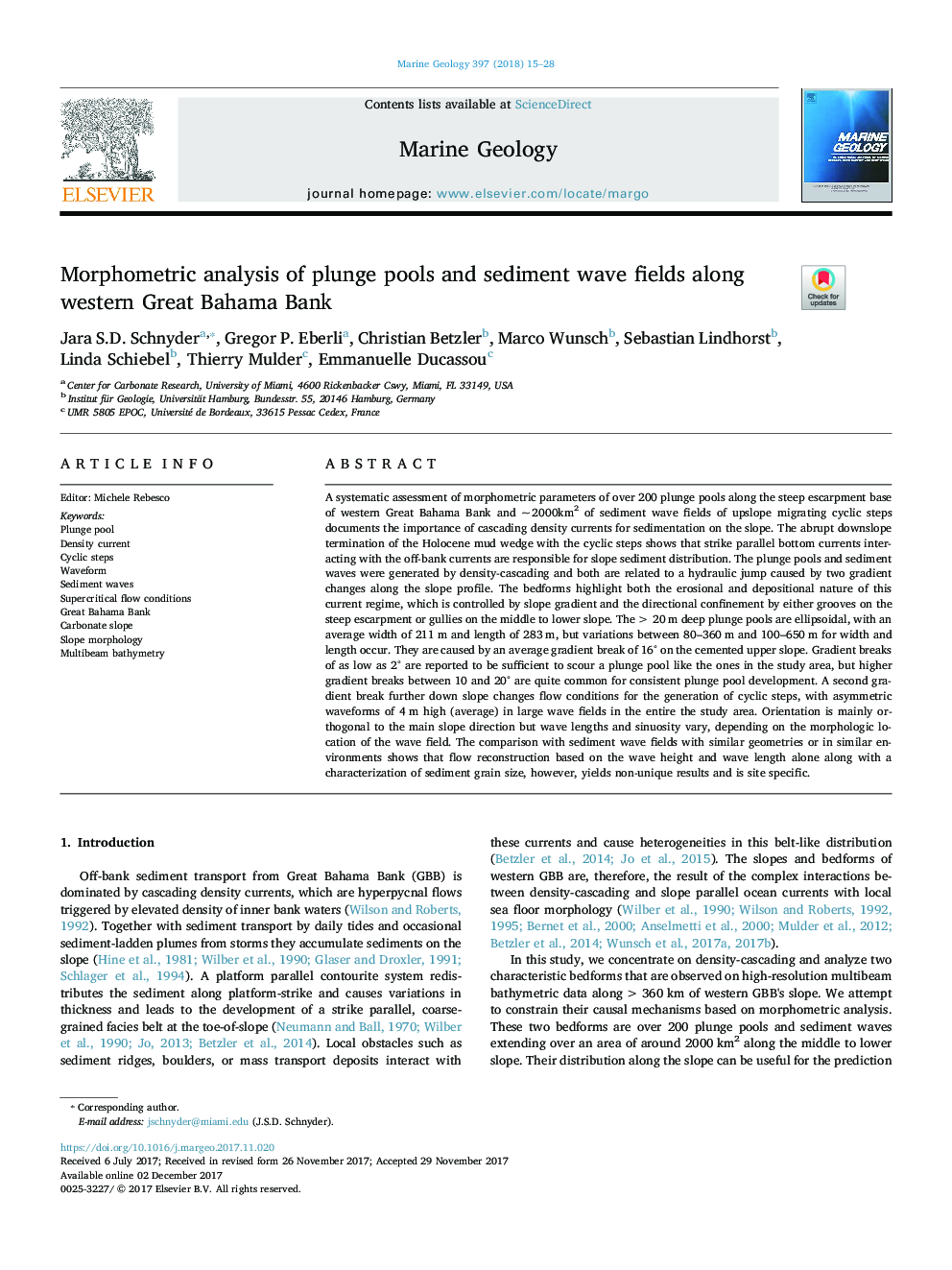| کد مقاله | کد نشریه | سال انتشار | مقاله انگلیسی | نسخه تمام متن |
|---|---|---|---|---|
| 8912009 | 1639055 | 2018 | 14 صفحه PDF | دانلود رایگان |
عنوان انگلیسی مقاله ISI
Morphometric analysis of plunge pools and sediment wave fields along western Great Bahama Bank
ترجمه فارسی عنوان
تجزیه و تحلیل مورفومتریک از استخر های شناور و زمینه های رسوب موج در غرب باهامای غربی
دانلود مقاله + سفارش ترجمه
دانلود مقاله ISI انگلیسی
رایگان برای ایرانیان
کلمات کلیدی
موضوعات مرتبط
مهندسی و علوم پایه
علوم زمین و سیارات
ژئوشیمی و پترولوژی
چکیده انگلیسی
A systematic assessment of morphometric parameters of over 200 plunge pools along the steep escarpment base of western Great Bahama Bank and ~ 2000km2 of sediment wave fields of upslope migrating cyclic steps documents the importance of cascading density currents for sedimentation on the slope. The abrupt downslope termination of the Holocene mud wedge with the cyclic steps shows that strike parallel bottom currents interacting with the off-bank currents are responsible for slope sediment distribution. The plunge pools and sediment waves were generated by density-cascading and both are related to a hydraulic jump caused by two gradient changes along the slope profile. The bedforms highlight both the erosional and depositional nature of this current regime, which is controlled by slope gradient and the directional confinement by either grooves on the steep escarpment or gullies on the middle to lower slope. The > 20 m deep plunge pools are ellipsoidal, with an average width of 211 m and length of 283 m, but variations between 80-360 m and 100-650 m for width and length occur. They are caused by an average gradient break of 16° on the cemented upper slope. Gradient breaks of as low as 2° are reported to be sufficient to scour a plunge pool like the ones in the study area, but higher gradient breaks between 10 and 20° are quite common for consistent plunge pool development. A second gradient break further down slope changes flow conditions for the generation of cyclic steps, with asymmetric waveforms of 4 m high (average) in large wave fields in the entire the study area. Orientation is mainly orthogonal to the main slope direction but wave lengths and sinuosity vary, depending on the morphologic location of the wave field. The comparison with sediment wave fields with similar geometries or in similar environments shows that flow reconstruction based on the wave height and wave length alone along with a characterization of sediment grain size, however, yields non-unique results and is site specific.
ناشر
Database: Elsevier - ScienceDirect (ساینس دایرکت)
Journal: Marine Geology - Volume 397, 1 March 2018, Pages 15-28
Journal: Marine Geology - Volume 397, 1 March 2018, Pages 15-28
نویسندگان
Jara S.D. Schnyder, Gregor P. Eberli, Christian Betzler, Marco Wunsch, Sebastian Lindhorst, Linda Schiebel, Thierry Mulder, Emmanuelle Ducassou,
